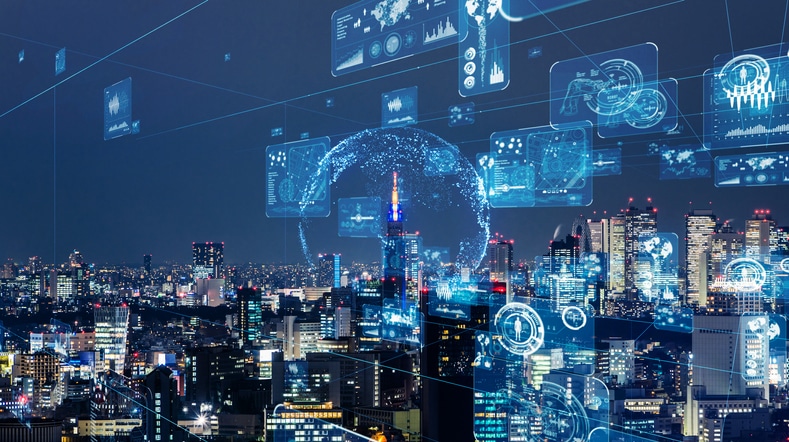The Security Risks Are Real with Coming Rollout of 5G Networks
Discover what the arrival of ultra-fast 5G networks means for cybersecurity, driven by the significant number of devices that will be connected to each network.

As ultrafast 5G networks emerge, so too do potential cybersecurity threats. For security experts, the unknowns make predictions for what risks to address more challenging
What is 5G?
5G is a new approach to wireless connectivity. It features speeds 20 to 100 times faster than the existing fastest speeds on 4G long-term evolution (LTE) networks. 5G (which stands for the fifth generation of wireless technology to be available in the United States and worldwide) networks also will support larger numbers of wireless devices.
Given the proliferation of connected devices (the Internet of Things), the ability to connect more objects without affecting performance is a significant benefit.
How Does 5G Technology Differ from Previous Network Solutions?
5G delivers faster speeds and lower latency due to fundamental changes in the network structure. Among the key changes are:
- Use of higher radio frequencies than 4G, allowing for more data to be transmitted at faster speeds
- A new technology, Massive MIMO (multiple input multiple output) that uses targeted beams that follow a connected user around a cell site, providing better capacity, coverage and speed. Massive MIMO acts like a spotlight, directing the technology in a specific direction, as opposed to existing 4G tower technology that’s more like a floodlight, firing data in all directions, wasting power and energy.
What Are the New Cyberthreats?
With any new technology comes the new potential of attacks and intrusions. With 5G, more devices can be connected at once, more data is flowing, and data exchange happens at a far more rapid pace. Here are some of the main challenges that come with the new wireless protocol.
- More Devices Means Lack of Scalability. Today, companies that have large numbers of connected devices on their networks find it difficult to manage and secure these objects. As those businesses adopt 5G, they may be managing hundreds if not tens of thousands of devices. The challenges of scalability of security solutions will only magnify.
- New Risks Will Emerge. Today, most cybersecurity solutions focus on traditional connected devices — desktop computers, servers, smartphone and other mobile devices. 5G increases the opportunity to connect more types of objects. With each newly connected object comes an increased network threat, another possibility for hackers to expose a security flaw in a device that’s not updated or fully protected.
5G also encourages more businesses to invest in connected devices as part of their business operations. That means a growing number of new devices, interfaces and technologies.
Consider the potential number of smart devices in your home — refrigerator, coffee machine, washing machine, doorbell, television, digital assistant and security system are all connected and potential targets.
- More Privacy Issues. More entities are passing laws and regulations that govern how data can be stored, transmitted and used. That means organizations using 5G will need to comply with multiple regulatory hurdles related to information collected by, stored on and used by connected devices.
- Unknown Capabilities. Today’s network security systems and processes are constructed to monitor traffic and identify potential threats based on activity and data, all in real time. Doing so allows them to detect and contain suspect activity quickly. The solutions are designed to work with the existing bandwidth speeds and restrictions. With the higher capacity and speeds of 5G, that model may go out the window. New protocols are necessary for encryption, monitoring and prevention, which may mean existing firewalls may no longer work with 5G.
Yet with few 5G networks operational, there is little to baseline for testing or assessment. Hardware will likely need to be upgraded, processes changed and new guidelines developed and implemented.
- Integration and Automation. Today’s solutions can operate independently of other systems, but the impending 5G revolution means integration and automation will need to become part of future solutions. Security solutions will need to connect to the entire IT operation and data will need to be synchronized throughout multiple security layers.
What Can the Security Profession, Carriers and Businesses Do to Prepare for 5G Security Needs?
The solution to 5G security challenges will be multilayered and the responsibility of multiple parties. Among the key changes necessary are:
- Carriers will need to extend firewall protection to cover new distributed networks of connected devices
- Improved authentication and management of devices
- Self-updating, self-reporting, self-hardening and self-healing devices will need to become the norm
- Access and discoverability protocols will need to be built through multiple layers
The benefits of 5G are significant. With the right security programs and solutions in place, it’s likely to be a big leap forward in connectivity.


